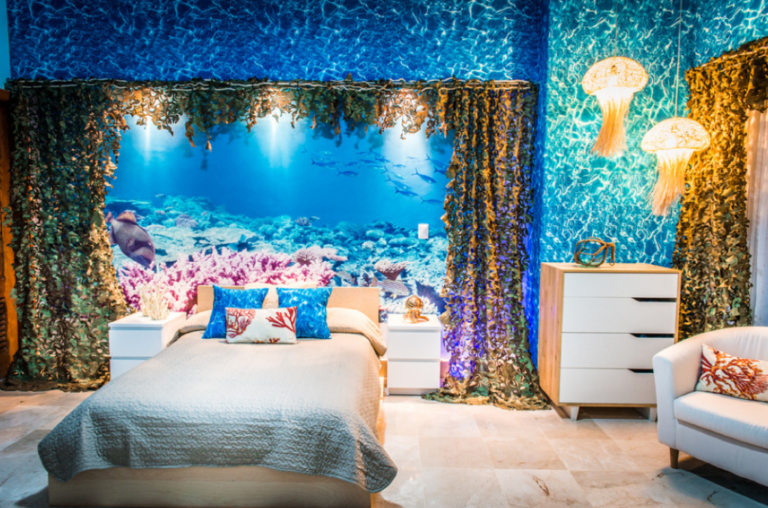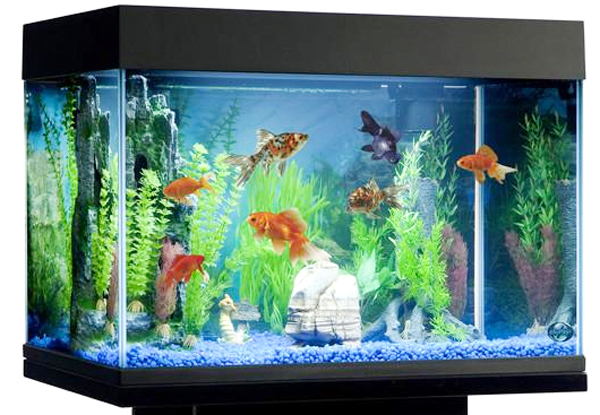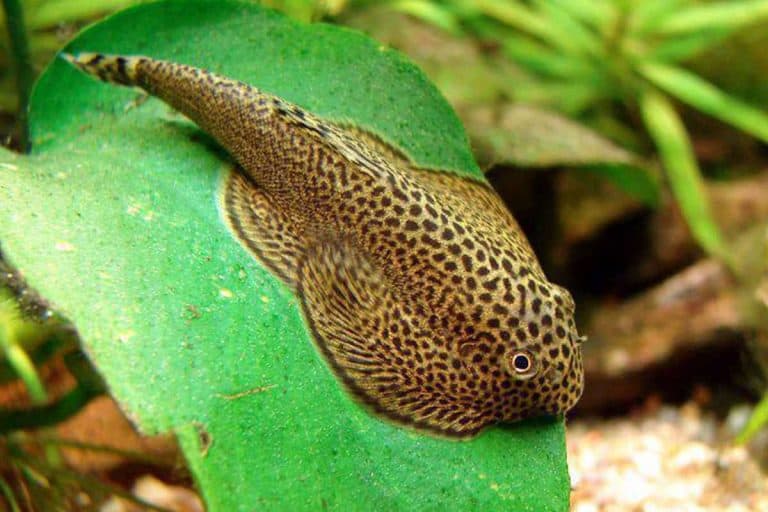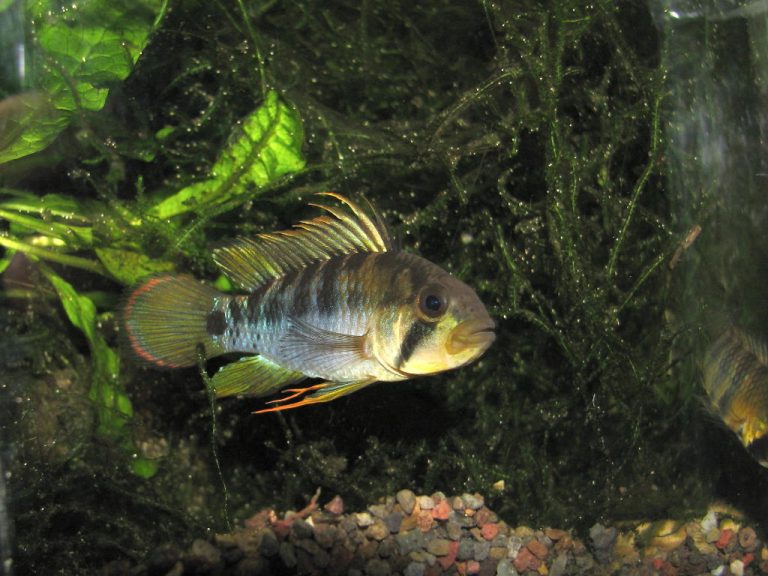What is the Best Temperature for a Saltwater Aquarium? A Guide to Optimal Conditions
The best temperature for a saltwater aquarium is typically between 76°f and 82°f. Maintaining the optimal temperature for a saltwater aquarium is crucial for the health and well-being of its inhabitants.
It plays a vital role in the metabolic rate, immune system, and overall ecosystem stability. By adhering to the recommended temperature range of 76°f to 82°f, aquarium owners can create a comfortable habitat that promotes the growth and vitality of marine life.
This temperature range provides an ideal balance, allowing the fish and coral to thrive while minimizing the risk of disease and stress. Proper temperature regulation is achievable through the use of a reliable aquarium heater and regular monitoring to ensure a consistent and suitable environment for the aquatic organisms. By maintaining the correct temperature, aquarium owners can enjoy a beautiful and thriving saltwater ecosystem.

Credit: www.amazon.com
Why Is Temperature Control Crucial For Saltwater Aquariums?
The significance of maintaining the right temperature in a saltwater aquarium
When it comes to setting up and maintaining a saltwater aquarium, one crucial factor that often gets overlooked is temperature control. However, maintaining the right temperature is essential for the health and well-being of the aquatic life in your tank.
Just as humans prefer stability in temperature, marine organisms are no different. Inconsistent or improper temperature can have significant consequences for the delicate balance of your saltwater aquarium, leading to stress, disease, and even death of your aquatic inhabitants. In this section, we will explore why temperature control is so crucial and how it directly affects the overall health and well-being of the marine life in your aquarium.
How Temperature Affects The Overall Health And Well-Being Of Aquatic Life
Temperature plays a vital role in the physiology and behavior of marine organisms. Here are some key points to consider:
- Metabolism and growth: Temperature directly impacts the metabolic rate of aquatic organisms, influencing their growth and overall health. Higher temperatures can speed up metabolism, leading to increased energy demands and potentially limiting growth. On the other hand, lower temperatures can slow down metabolism, making it difficult for marine life to properly metabolize nutrients.
- Oxygen levels: Temperature affects the dissolved oxygen levels in the water. Warmer water holds less dissolved oxygen, which can suffocate fish and other organisms. Cold-water species, like certain corals, have adapted to lower oxygen levels, while tropical fish require higher oxygen concentrations. Maintaining the right temperature helps ensure adequate oxygen levels for the specific species in your tank.
- Immune system function: Temperature significantly impacts the immune system of marine organisms. Fluctuations or deviations from the ideal temperature range can weaken their immune response, making them more susceptible to diseases and infections. A consistent and appropriate temperature helps support a healthy immune system, reducing the risk of illness in your saltwater aquarium.
- Reproduction and breeding: Temperature plays a critical role in the reproductive cycles of marine organisms. Many species have specific temperature requirements for successful breeding. Failure to maintain the correct temperature can disrupt reproductive behavior, hinder fertilization, and impact the survival of eggs and larvae.
- Behavior and stress: Temperature variations can cause stress and behavioral changes in aquatic animals, affecting their feeding habits, aggression levels, and overall well-being. A stable and suitable temperature provides a sense of security and promotes natural behaviors in your saltwater aquarium.
The Consequences Of Improper Temperature Control
Failure to maintain the proper temperature in your saltwater aquarium can have severe consequences for the health and longevity of your marine life. Consider the following points:
- Stress: Fluctuating temperatures can lead to stressful conditions for marine organisms. Chronic stress weakens their immune system, making them more susceptible to diseases and infections. Stress also affects the overall behavior and well-being of the animals, leading to reduced appetite and increased aggression.
- Disease outbreaks: Poor temperature control creates an ideal environment for the proliferation of harmful bacteria, parasites, and other pathogens. Once these disease-causing agents enter your aquarium, it can be challenging to eradicate them. Diseases can quickly spread among your marine life, causing illness and death if not addressed promptly.
- Reduced lifespan: Improper temperature control can significantly shorten the lifespan of your aquatic inhabitants. Chronic exposure to unfavorable temperatures can lead to stunted growth and weakened immune systems, making them more susceptible to health issues. This can ultimately lead to premature death.
- Negative impact on corals and invertebrates: Temperature fluctuations can have detrimental effects on coral reefs and invertebrates. Rapid or prolonged exposure to temperature stress can lead to coral bleaching, loss of symbiotic algae, and ultimately the death of these fragile organisms.
It is clear that maintaining the right temperature in your saltwater aquarium is of utmost importance. By providing a stable and suitable environment for your marine life, you can ensure their overall health, well-being, and longevity. In the next section, we will dive into the specifics of how to achieve and maintain the best temperature for your saltwater aquarium.
Factors To Consider When Setting The Temperature
Maintaining the right temperature in a saltwater aquarium is crucial for the health and well-being of the marine species it houses. But determining the best temperature can be tricky, as various factors come into play. In this section, we will explore the key considerations when setting the temperature for a saltwater aquarium.
Optimal Temperature Range For Different Types Of Saltwater Aquariums
- Fish-only saltwater aquariums: Typically, fish-only saltwater aquariums thrive in a temperature range of 73 to 80 degrees fahrenheit (23 to 27 degrees celsius). This range is comfortable for most common saltwater fish species.
- Reef aquariums: Reef aquariums, which host a variety of coral species, need a slightly higher temperature range of 76 to 82 degrees fahrenheit (24 to 28 degrees celsius). The warmer temperature promotes the growth and health of the coral.
- Coldwater aquariums: Coldwater aquariums, as the name suggests, require cooler temperatures ranging from 50 to 65 degrees fahrenheit (10 to 18 degrees celsius). These aquariums are designed to house species that prefer cooler environments, such as certain types of seahorses and anemones.
Variations In Temperature Requirements Among Various Marine Species
- Tropical species: Many tropical saltwater fish, such as clownfish and tangs, prefer warmer waters within the range of 76 to 82 degrees fahrenheit (24 to 28 degrees celsius). These species are often found in reef environments and require stable temperatures to thrive.
- Temperate species: Some marine species, like certain types of snails and crabs, are better suited to cooler temperatures between 50 to 68 degrees fahrenheit (10 to 20 degrees celsius). These animals are found in temperate regions or colder parts of the ocean.
- Careful research: It is essential to research the specific temperature requirements of the marine species you plan to keep in your saltwater aquarium. Different species have varying temperature tolerances, and it is crucial to provide the optimal conditions to ensure their well-being and longevity.
Factors That Can Influence The Ideal Temperature For A Saltwater Aquarium
- Natural habitat: The temperature conditions in the natural habitat of the marine species should be carefully considered when setting the temperature for your saltwater aquarium. Understanding their natural environment will help replicate the ideal conditions in captivity.
- Equipment and lighting: Some equipment, such as heaters and chillers, can help regulate the temperature in your saltwater aquarium. Additionally, the type and intensity of lighting used can influence the overall temperature.
- Compatibility: It is important to select marine species that have similar temperature preferences. Mixing species with conflicting temperature requirements can lead to stress or health issues.
- Water chemistry: Temperature can impact the water’s ph, salinity, and oxygen levels. Thus, it is crucial to monitor and maintain the appropriate temperature for your saltwater aquarium to preserve the overall water chemistry and ensure the well-being of your marine inhabitants.
By considering each of these factors, you can set the optimal temperature for your saltwater aquarium, providing a comfortable and healthy environment for the marine species within it. Remember to closely monitor the temperature and make any necessary adjustments to ensure the well-being of your saltwater ecosystem.
The Best Temperature For A Saltwater Aquarium
Saltwater aquariums are a beautiful addition to any home or office, showcasing the vibrant and intricate marine life. However, maintaining the optimal temperature for your saltwater aquarium is crucial for the health and well-being of the marine inhabitants. When it comes to the best temperature for a saltwater aquarium, there are several key considerations to keep in mind.
Let’s explore the factors that determine the ideal temperature range, the key considerations for selecting the right temperature, and how to adjust the temperature to meet the specific needs of your marine inhabitants.
How Temperature Fluctuations Impact Saltwater Aquariums
Saltwater aquariums require careful monitoring and maintenance to create an optimal environment for marine organisms. One crucial factor that significantly influences the health and well-being of these organisms is temperature. Understanding the effects of temperature fluctuations on saltwater aquariums is essential for any aquarium enthusiast.
In this section, we will delve into the impact of temperature changes on marine organisms, explore common causes of fluctuations, and discuss techniques and tools to maintain a stable temperature in your saltwater aquarium. So, let’s dive in and explore the fascinating world of aquarium temperature management.
Monitoring And Controlling Temperature In A Saltwater Aquarium
Maintaining the correct temperature in a saltwater aquarium is crucial for the health and well-being of its inhabitants. Fluctuations in temperature can cause stress, disease, and even death for marine life. In this section, we will explore the equipment and technology needed for accurate temperature measurement, effective strategies for maintaining a consistent temperature, and troubleshooting common temperature-related issues in saltwater aquariums.
Equipment And Technology For Accurate Temperature Measurement
To ensure accurate temperature measurement in your saltwater aquarium, the following equipment and technology can be utilized:
- Thermometer: A reliable and accurate thermometer is essential for monitoring the temperature of the water. There are various types available, such as the traditional glass thermometer, digital thermometers, and even wireless options that can be accessed remotely.
- Temperature controller: Investing in a temperature controller can help maintain a stable temperature by automatically turning on or off heating or cooling devices. These controllers can be set to specific temperature ranges, ensuring the water remains within optimal parameters.
- Infrared thermometer: An infrared thermometer is a non-contact device that measures the temperature of the water surface. This technology eliminates the need to submerge a thermometer into the aquarium, reducing any potential stress to the marine life.
Effective Strategies For Maintaining A Consistent Temperature
Now that we have discussed the equipment and technology used for accurate temperature measurement, let’s explore some effective strategies for maintaining a consistent temperature in your saltwater aquarium:
- Heaters and chillers: Depending on the ambient temperature of the room where your aquarium is located, you may need to utilize heaters or chillers to adjust the water temperature accordingly. These devices can be set to specific temperature ranges, providing a stable and comfortable environment for your marine life.
- Proper insulation and placement: Ensuring your aquarium is properly insulated and placed away from direct sunlight or any heat-emitting appliances can help regulate the temperature. Heat sources should be minimized, and excessive exposure to sunlight should be avoided to prevent temperature fluctuations.
- Regular monitoring: It is important to monitor the temperature of your saltwater aquarium regularly. This can be done using the aforementioned thermometers or temperature controllers. Regular monitoring allows you to catch any temperature deviations early on and take appropriate action to rectify them.
Troubleshooting Common Temperature-Related Issues In Saltwater Aquariums
Despite our best efforts, temperature-related issues can still arise in saltwater aquariums. Here are some common issues and troubleshooting steps to address them:
- Temperature fluctuations: If you notice frequent temperature fluctuations, it may be due to improper insulation or inappropriate placement of your aquarium. Ensure proper insulation, adjust the position of your aquarium away from heat sources, and consider using insulation materials to stabilize the temperature.
- Heating or cooling malfunctions: In the event of a heating or cooling device malfunction, it is important to have backup equipment on hand. Regularly check your devices for any signs of malfunction and have spare equipment ready to prevent sudden temperature changes.
- Power outages: During power outages, temperature control becomes a challenge. To mitigate the impact on your aquarium, consider investing in a backup power supply, such as a generator, or utilize battery-powered air pumps to maintain oxygen levels.
By equipping yourself with the necessary equipment, implementing effective temperature control strategies, and troubleshooting common issues, you can provide a stable and comfortable environment for your saltwater aquarium’s inhabitants. Remember, consistency is key when it comes to maintaining the optimal temperature, ensuring the health and vitality of your marine life.
Frequently Asked Questions For What Is The Best Temperature For A Saltwater Aquarium
What Is The Ideal Temperature Range For A Saltwater Aquarium?
The ideal temperature range for a saltwater aquarium is generally between 75°f and 82°f.
Why Is Temperature Important For A Saltwater Aquarium?
Maintaining the right temperature in a saltwater aquarium ensures a stable and comfortable environment for the marine life, promoting their health and well-being.
What Happens If The Temperature Is Too High In A Saltwater Aquarium?
If the temperature is too high in a saltwater aquarium, it can lead to stress, reduced oxygen levels, and even death of the marine organisms.
What Happens If The Temperature Is Too Low In A Saltwater Aquarium?
If the temperature is too low in a saltwater aquarium, it can slow down the metabolic rate of the marine species, making them vulnerable to diseases and affecting their overall growth and vitality.
Conclusion
To ensure the health and vitality of your saltwater aquarium, maintaining the ideal temperature is crucial. By understanding the specific temperature requirements of your marine life, you can create an environment that mimics their natural habitat. Whether you have fish, corals, or invertebrates, each species has its own temperature preference.
Achieving the best temperature for your saltwater aquarium will promote optimal growth, reproduction, and overall well-being. It’s important to remember that consistency is key, as sudden fluctuations in temperature can lead to stress and even death. Regularly monitoring and adjusting the temperature using a reliable thermometer and heater will help you maintain a stable and comfortable environment for your aquatic pets.
By providing the right temperature, you are setting the stage for a thriving saltwater aquarium where your marine life can thrive and flourish.






